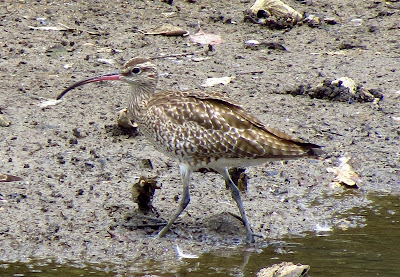Caspian Tern Hydroprogne caspia
Snyder's Flats, Bloomingdale, On
30 April 2013
The Caspian Tern is the largest tern in the world, and is commonly found in southern Ontario from spring through fall. This evening we were fortunate to see six of them, four loafing on a rock together. The other two were at some distance standing in shallow water. Before we left all but two took to the air and we were treated to a display of aerial elegance and perfection. The powerful neck and head, as well as the huge red bill, are clearly evident in the pictures below.





























































.svg.webp)









